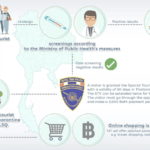The Department of Fisheries has warned that krathongs made from bread and edible ingredients cause river pollution. The fishes found in the river don’t eat bread and the ingredients break down before public workers can remove the krathongs from the water. Wichan Ingsrisawang from the department reported on 30 October 2020 a reminder to the people who celebrate Loy Krathong Festival taking place on the 31st of this month. Bread and ice cream cone krathongs have become very popular in recent years because there is a belief that fishes in the water will eat the krathongs.

The intention behind edible krathongs are good, but the truth is that not all fishes can eat these ingredients. Even if they can, there are too many krathongs for the fish to eat and they just end up stinking the river. Wichan reveals this is even worse in closed waters such as temple ponds and school ponds because the food ends up sinking and makes the water rotten over time. In many cases, there are so many rotten krathongs that the fishes and other aquatic animals end up dying. The only fish that can eat these types of krathongs are herbivorous fishes while thai rivers often have a lot of predatory fish including catfish and snakehead fish.
If you intend to use edible krathongs because that is what you prefer or the krathongs have already been purchased then it is best to float them in open waters. If you are still choosing a krathong then the best ones are made from natural materials including a banana tree trunk, spider lily plant, banana leaves, flowers, and wooden sticks to attach the materials together. Many krathongs on the market may seem like they are made from natural materials but the banana tree trunk is often replaced with foam and the krathong is decorated with plastic, sharp needles, and other dangerous materials.





